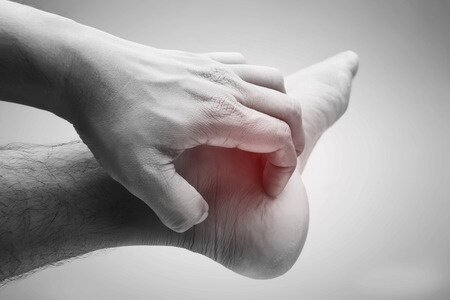Fungal Disease Awareness Week: Let’s Talk About Toenail Fungus
Toenail fungus is an infection beneath the surface of the nail caused by fungi.
Because September 23 to 27 is Fungal Disease Awareness Week, today Dr. William Buffone of North Fork Podiatry/Three Village Podiatry is sharing important information regarding toenail fungus.
It can be challenging to avoid contact with minuscule organisms like fungi. The toenails are particularly vulnerable around soggy areas where you typically walk barefoot such as locker rooms, showers, and swimming pools.
Damage to the nail bed and even pressure from shoes can make the nail more vulnerable to all types of infection, including fungal infection. Sufferers from chronic diseases such as circulatory problems, immune-deficiency conditions, or diabetes are particularly disposed to fungal nails. Other factors may be a history of excessive perspiration and athlete’s foot.
Toenail fungus is often ignored because the infection can be present for years without causing any symptoms. The disease is characterized by a progressive change in a toenail's quality and color, which is often unsightly and embarrassing.
Diagnosis and Treatment
Treatments may vary depending on the severity and nature of the infection. Your podiatrist can identify a fungal infection early, culture the nail, establish the cause, and create an effective treatment plan. This may include prescribing oral or topical medication and removing the diseased nail debris.
Preventing Toenail Fungus
Proper hygiene and regular inspection of the feet and toes are the first lines of defense against fungal nails.
Cleanse feet with soap and water and dry thoroughly.
Wear shower shoes in public areas.
Change socks or shoes at least once daily.
Trim toenails straight across so that they won’t become ingrown.
Wear shoes that fit properly and are constructed of materials that breathe.
Avoid wearing excessively tight hosiery.
Wear socks made of synthetic fiber that absorbs moisture.
Disinfect the instruments you use to cut your toenails.
Don't apply polish to nails suspected of infection.
Treat athlete's foot, if present.
If you’re noticing any thickening, deformity, or discoloration of your toenails, contact the office of Dr. William Buffone of North Fork Podiatry/Three Village Podiatry today at (631) 474-3338 to schedule a consultation.
You can reach Three Village Podiatry at (631) 474-3338, North Fork Podiatry (Southold) at (631) 765-6777 or North Fork Podiatry (Riverhead) at (631) 419-7107 or schedule your appointment online.
The sooner you get professional treatment, the better your chance at getting your toenails to clear up.
